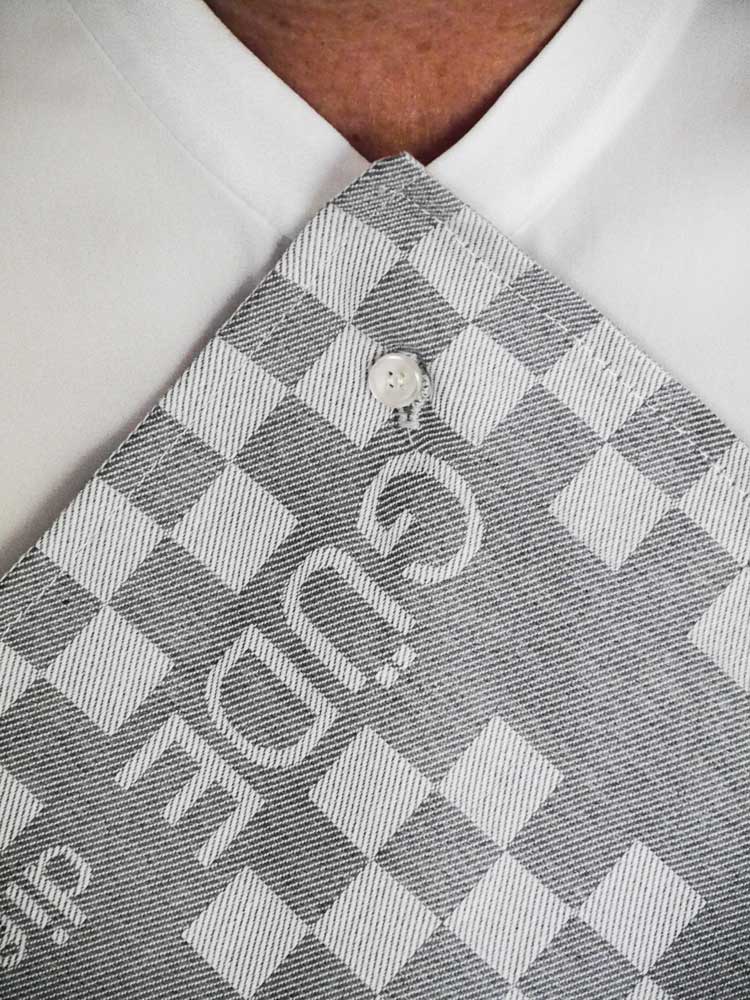An almost forgotten valuable helper in the kitchen and household.
The pit cloth (or: torchon) made of the natural fibres linen and cotton.
Was it the price, the belief in progress or the promising advertising that hyped the microfibre cloth as the supposed saviour in the kitchen and household? The triumph of synthetic fibres was unstoppable for a long time and led to a formerly indispensable material being pushed further and further out of the kitchen and household - the natural fibre linen. What was an indispensable helper for generations is now experiencing a renaissance in times in which one's own household enjoys a higher status again, in which people increasingly cook and bake themselves.
What generations have appreciated about the natural fibre linen ...
Linen is a natural fibre obtained from the flax plant. And as is so often the case, nature also provides man with excellent services with this material. Because linen hardly forms any fluff and can absorb moisture very well, but also release it just as well. This makes it the perfect fabric for tea towels. Hand-dried with a linen cloth, not only a fine wine glass shines like new after every wash. Thanks to the excellent moisture absorption, no residue remains on glasses, plates and cutlery that could impair the taste.
Güde Pit cloth€18,00
Art.no.: 5860
This qualifies it for use outside the kitchen as well. For example, linen was traditionally used in so-called pit cloths. The term pit cloth comes from the mines of the Ruhr area. It refers to a cloth of approx. 50 x 100 cm made of linen and cotton, half-linen. The strength and high weave density of the half-linen made the pit cloth a versatile helper for miners. One miner, for example, had several such cloths in use. Wrapped in a mine cloth, the workers' meals were kept protected from coal dust. Sweat and dirt were simply wiped away with the pit cloth. And finally, the traditional black and grey woven cloth was used as a bath towel in the washhouse at the end of the shift.
What was once known as pit cloth now goes by the name of torchon. The French term stands for the kitchen towel made of half-linen, which is indispensable in professional kitchens. Whether it is used to protect hands from hot plates or pots, to wipe the rim of plates before serving or to cover a maturing yeast dough, it is usually attached to the chef's jacket or trousers and is one of the most frequently used utensils in kitchens around the world.
The return to cooking at home is usually accompanied by more sophisticated kitchen equipment. What was good enough for a long time no longer meets the demands of the new cooking and kitchen fans. They invest in new knives and pots, replace the machine glass with a high-quality hand-blown wine glass. Of course, the new equipment also needs to be looked after and treated accordingly. And so some people turn to a tea towel made of high-quality, absorbent linen, thus finally putting an end to champagne glasses in which the champagne does not sparkle.
So it's no wonder that the traditional material linen is being rediscovered for the kitchen and household and is gaining more and more enthusiasts. And if you wash your linen or half-linen cloth gently, spin it lightly and hang it damp to dry, you will enjoy this valuable kitchen and household helper for a long time.
Linen is made from the detached fibres of the stalks of the flax plant. In Europe, flax is mainly cultivated in the north of France. In elaborate production processes, the flax straw is dried, broken and shredded. The fibres are twisted into plaits and then spun into yarn.
Under the hands of an experienced weaver, the fibre finally becomes a high-quality fabric.
However, the natural fibre linen places high demands on weaving. The warp threads, for example, must be made of a particularly even and therefore high-quality yarn, as they are exposed to great stress due to the irregularity of the natural product linen. Many years of experience and detailed knowledge of the weaver about yarn and machines are the basic prerequisite for a noble end product.
Güde Napkin with buttonhole€10,00
Art.no.: 5880
Perfectly served up!
Napkins from GÜDE made of pure cotton.
Those who enjoy preparing their meals with GÜDE knives, who then want to savour their meal with a GÜDE cutlery, complete their table best with the GÜDE napkins.
Woven from pure cotton, the napkins from GÜDE are the perfect finishing touch to a table set with Solingen blacksmith's art. The natural fibre cotton is obtained from the long seed hairs of the plant. It is not only its absorbency that makes this the perfect material for napkins - cotton can absorb up to 65% of its own weight in water. Once absorbed, the fibre can release oil and dirt just as well. And it's skin-friendly, too, because cotton has a very low allergy potential.
But what is the best way to use the GÜDE napkin? Discreetly folded and placed on the thighs? Tucked into a blouse or shirt? Or placed on the table next to the plate? - It's up to you! And thanks to the hole in one of the four corners, the GÜDE napkin can also be stylishly attached to a button.

Food residues picked up with the GÜDE napkins can be easily removed at 60 degrees in the washing machine. Hang them up wet, air dry them and iron them on level 3 and they are ready for the next use at the table.
To protect the material and structure, the GÜDE napkins should not be bleached or tumble dried.


